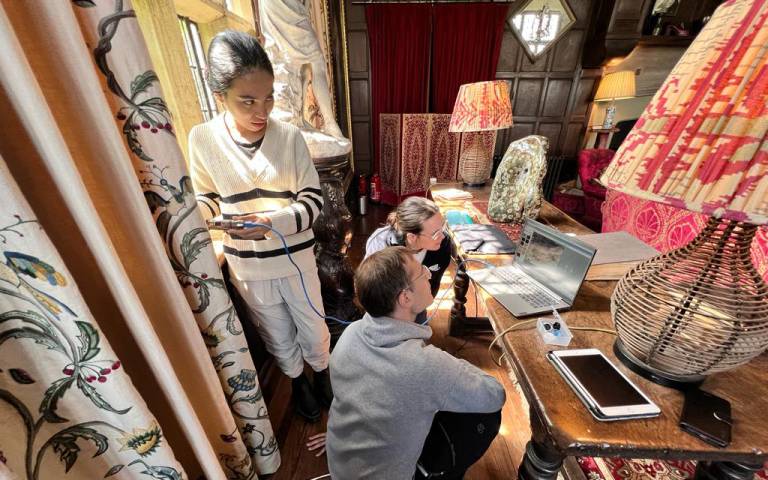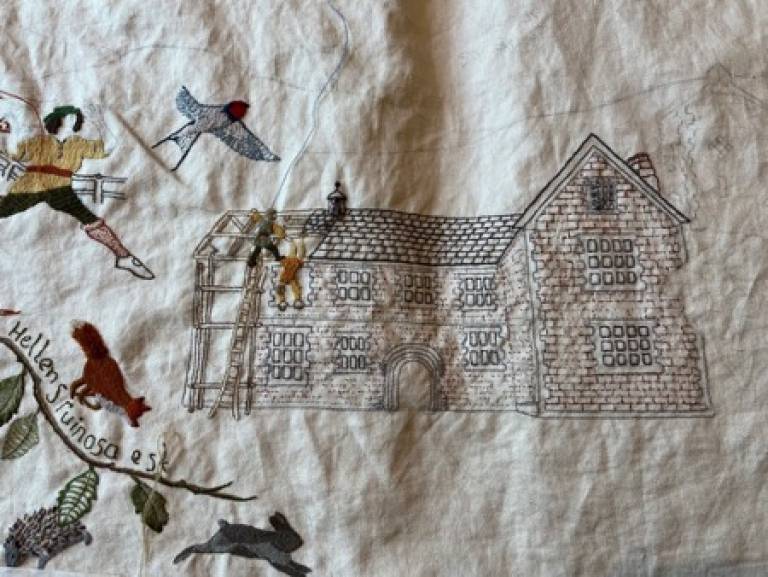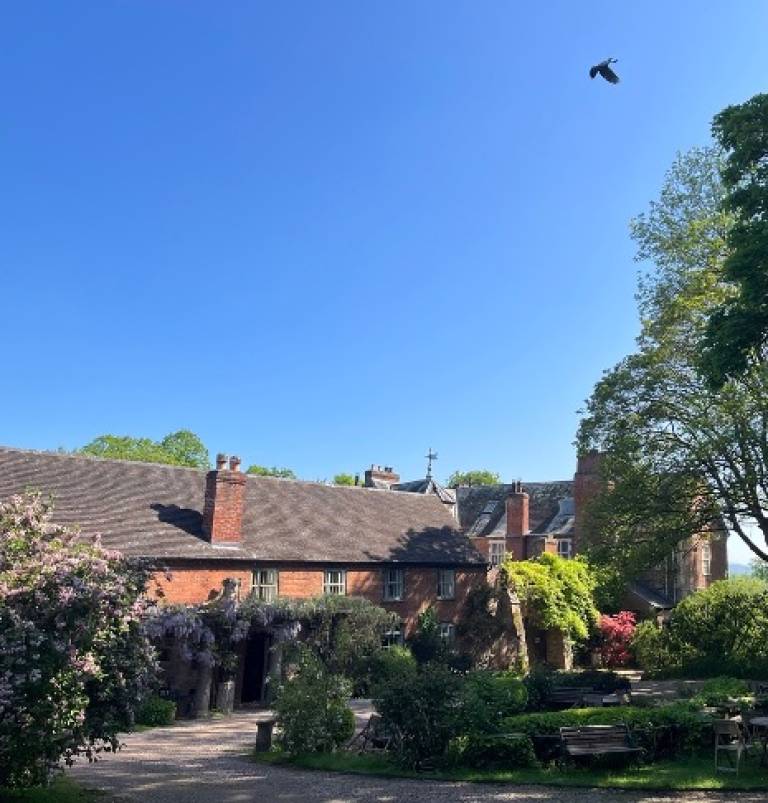PhD fieldwork at Hellens Manor advises on embroidery exhibition conditions
22 June 2023
Following 10-year tradition UCL ISH PhD students have undertaken fieldwork at Hellens Manor in Herefordshire, this year advising on the exhibition conditions for a new 9.5m long embroidery created by volunteers to tell the 1000-year story of Hellens.

In May, first-year PhD students at the UCL Institute for Sustainable Heritage (ISH) went on annual fieldwork trip to Hellens Manor, in rural Herefordshire. Hellens is recorded as early as 1056 and much of the manor house dates to the Tudor or Jacobean periods. It contains a superb collection with paintings by Tintoretto, Van Dyck, Goya, and Hogarth, Anne Boleyn’s comb, an impressive carriage collection, and two rumoured ghosts! It’s owned by a private charitable trust and is home to its staff and their families (as well as numerous dogs, a clutch of hens, and two carrot-loving donkeys). The house is open to the public during the summer months and the surrounding buildings are used by the community for various activities such as basket weaving and Morris dancing.
Students from UCL ISH have been studying Hellens for 10 years. Each year they work with the staff on a specific conservation question. This year, the students were asked to advise on the exhibition conditions for a new embroidery. A group of volunteers from the local community have been working for 5 years on an ambitious crewelwork embroidery frieze, 9 and a half meters long, that will tell the 1000-year story of Hellens. The students designed an experiment in the proposed gallery space with a test piece of embroidery to measure the environmental conditions. This, combined with temperature and humidity data from previous years, allowed them to recommend measures to the staff at Hellens to make the space ready for the installation once the tapestry is completed – there is still a few hundred years of history to stitch!
The students had four days to understand the issue, gather the required data, analyse the findings, and present the recommendations to the staff. Producing an evidence-based conservation plan for a beloved community endeavour in this timeframe was an invaluable learning experience. For the students (and staff) it was a pleasure to be able to spend a sunny week in the countryside, working alongside the Hellens team, and we all hope to return for the installation of the embroidery.
 Figure 1: a section of the embroidery to be exhibited
Figure 1: a section of the embroidery to be exhibited

 Figure 2: Hellens Manor in Herefordshire
Figure 2: Hellens Manor in Herefordshire

The making of the embroidery has proven that Hellens is not only culturally important for England history in general, but also it stands as a means of social engagement for the communities around the area. The volunteers that we mentioned before, they happily come once a week and they really look forward to it every time the day comes. They get along well and have a real sense of belonging to the manor. The embroidery is very much cherished by the team and hopefully will be exhibited in the best possible display. That is why the students are also very keen to help with the installation plan of this new fantastic collection.
In terms of the community value of the manor, it happened that a week just before this field trip was being held, the entire manor was busy in organising a music festival. It is indeed an annual event that brings together crowds from every age and backgrounds, not only from immediate neighbourhoods in Herefordshire but also all-around England. It is much loved by people having interest in history as well as music as the whole week is dedicated to a series of performances from renowned musicians. In addition, music masterclasses are also one of the key attractions made available to the young performer. It must be such a wonderful way to enjoy spring.
To keep Hellens alive for another thousand years is in no doubt what everyone will dream of. While students with diverse backgrounds gather in the manor, various insights can be valuable to contribute to the maintenance of the building and the collection, especially for specific problems that the staff may have. The relationship between Hellens Manor and UCL has been mutually great and hopefully will continue to grow.
 Close
Close

